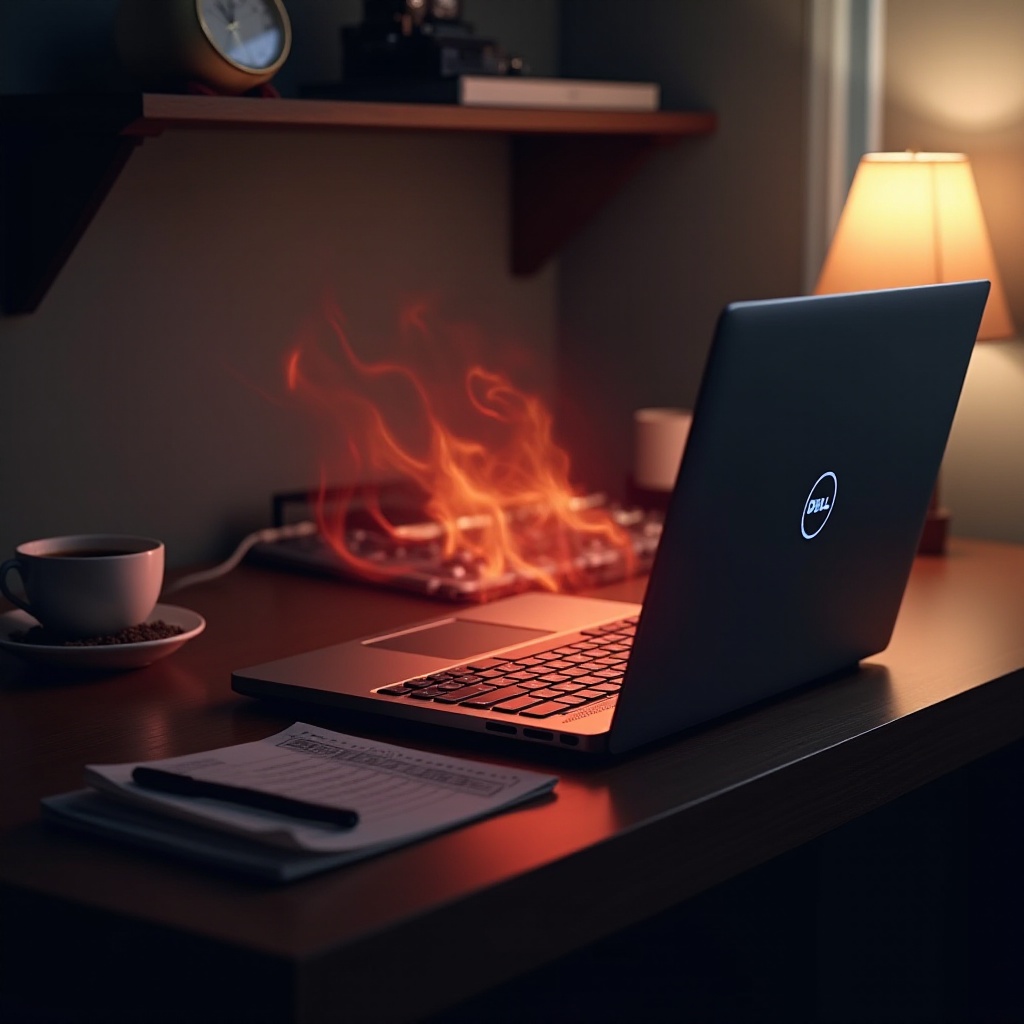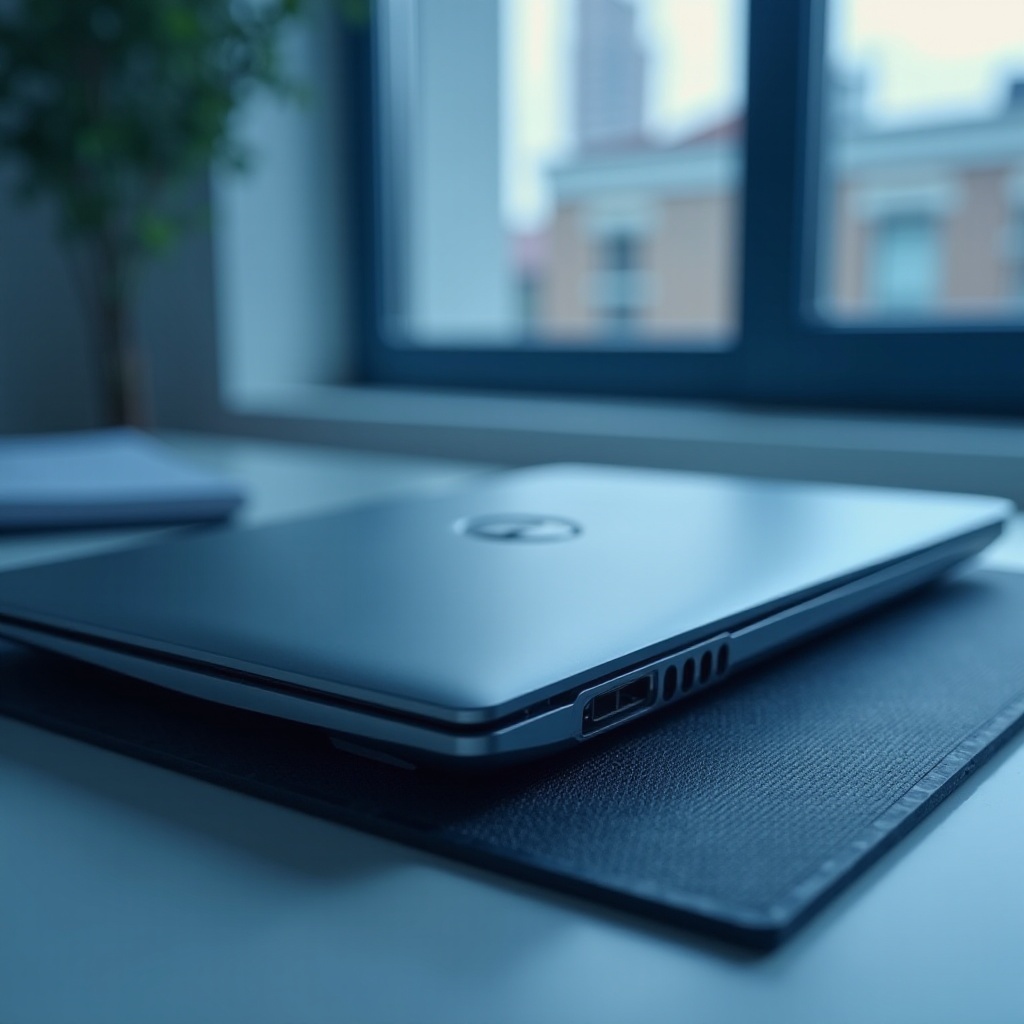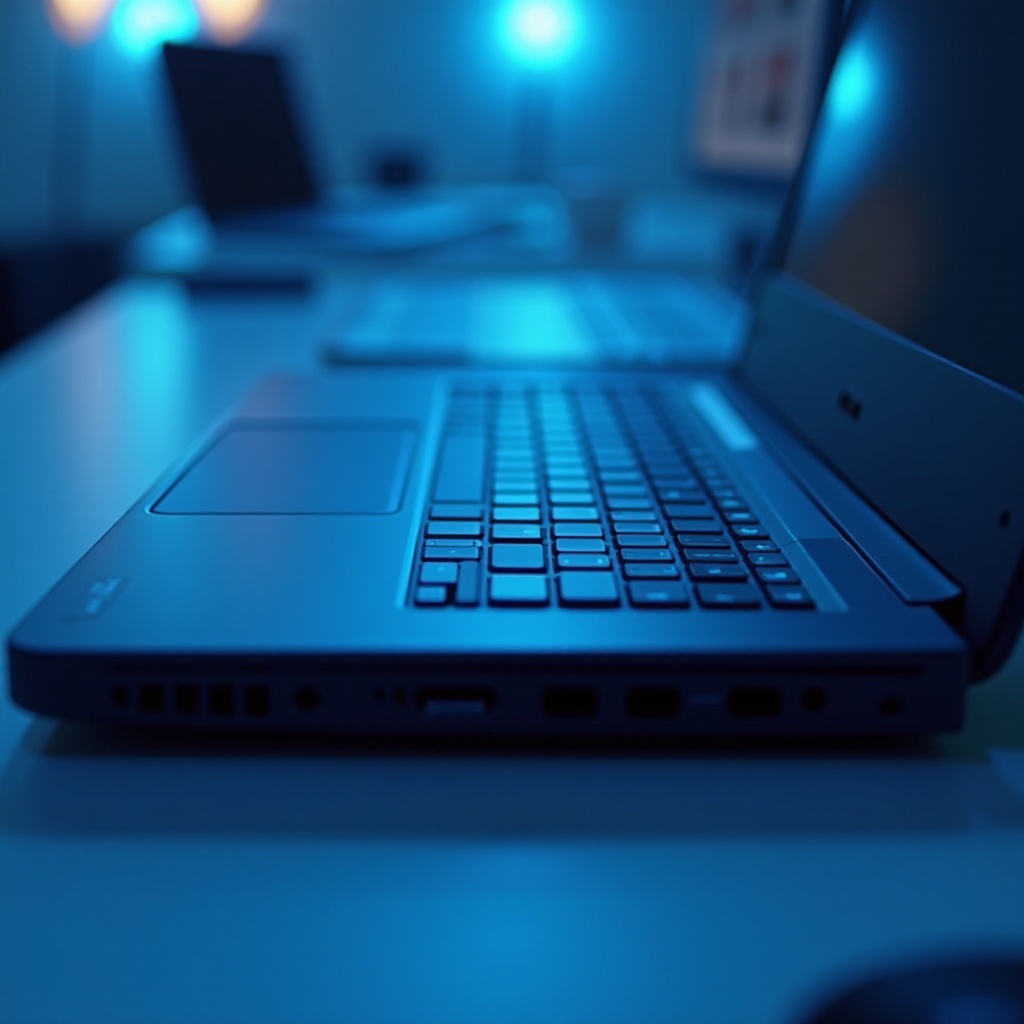Introduction
Dell laptops, renowned for their reliability and efficiency, like any tech device, can encounter challenges. A prevalent issue faced by users is overheating, which can lead to sluggish performance, unexpected shutdowns, or even hardware damage. Identifying the root causes combined with effective solutions is crucial for maintaining your laptop’s longevity. This guide provides strategies ranging from immediate fixes to preventative measures and advanced solutions. Whether confronting minor overheating or more severe issues, you will find valuable insights that keep your Dell laptop running optimally.

Common Causes of Dell Laptop Overheating
Understanding the common causes of overheating can significantly aid in prevention and timely resolution. One primary cause is dust accumulation inside the laptop, particularly within cooling fans and air vents. This buildup restricts airflow, impacting the cooling mechanism’s efficiency. Additionally, using high-performance applications excessively can strain the CPU and GPU, generating more heat. Lastly, improper power settings might push the laptop into unnecessary high-performance modes, resulting in increased heat output. Awareness of these causes allows for implementing the correct diagnostic and troubleshooting techniques, ensuring your laptop maintains a safe operating temperature.
Immediate Solutions to Cool Down Your Laptop
Noticing your Dell laptop overheating can be alarming, and immediate action is crucial. Below are quick solutions:
-
Adjusting Power Settings: Customize your laptop’s power settings to optimize energy usage. Switching to balanced or power-saving modes can lower heat production significantly by reducing CPU usage and screen brightness.
-
Closing Unnecessary Applications: The simultaneous running of several applications can overload processors. Closing non-essential programs reduces the workload on the CPU and GPU, thereby minimizing heat generation.
-
Elevating Your Laptop: Enhance airflow by elevating your laptop with a stand or a book, promoting air circulation underneath. This prevents heat entrapment and aids faster cooling.
Incorporating these immediate fixes while adopting preventative strategies ensures overheating is effectively managed.
Preventative Measures to Avoid Overheating
Preventing overheating is key to enhancing the performance and lifespan of your Dell laptop. Consider these steps:
-
Regular Cleaning and Dust Removal: Dust in vents and fans is a frequent overheating cause. Routine cleaning with a soft brush or compressed air can prevent this buildup, maintaining efficient airflow and cooling.
-
Using Cooling Pads: Cooling pads act as an additional cooling mechanism. They provide elevation and contain built-in fans to dissipate heat, thereby reducing operating temperatures efficiently.
-
Updating BIOS and Drivers: Outdated BIOS and drivers can hinder proper heat management. Regular system updates ensure your laptop regulates performance and heat effectively.
By committing to these preventive measures, long-term management of your Dell laptop’s temperature is achievable, bolstering its performance and extending its lifespan.

Advanced Solutions for Persistent Overheating
In some situations, simple fixes may not suffice. Here are advanced solutions to consider:
-
Replacing Thermal Paste: Over time, thermal paste, which aids heat transfer between the CPU and its heatsink, can degrade. Replacing it can significantly improve heat management through enhanced cooling.
-
Assessing and Upgrading Laptop Fans: If built-in fans are malfunctioning or inefficient, they might not provide adequate cooling. Upgrading to high-performance fans or evaluating the current ones can combat persistent overheating issues.
Employing these advanced methods can substantially enhance your laptop’s cooling effectiveness, especially when other techniques have been inadequate.

When to Consult Professional Help
While many solutions are user-implementable, professional assistance might be necessary in some scenarios. If persistent overheating continues despite all attempts, or if you’re hesitant about complex tasks like replacing thermal paste, consulting an expert may be prudent. Professionals can uncover potential hardware issues that are not easily visible, ensuring your laptop gets precise repairs.
Conclusion
Although overheating issues can seem daunting, they are manageable with informed approaches. Understanding causes, applying immediate solutions, and adhering to preventive and advanced measures can substantially reduce overheating risks for your Dell laptop. Regular maintenance and professional consultation when needed ensure the device remains operational and performs at its best.
Frequently Asked Questions
How can I Identify if my Dell Laptop Overheating is due to a Hardware Issue?
Persistent overheating might indicate a hardware issue if basic troubleshooting fails. Signs such as excessive heat despite low usage, loud fan noise, or random shutdowns suggest a deeper problem. Professional diagnosis is recommended.
Can Overheating Damage My Dell Laptop Permanently?
Yes, consistent overheating can lead to hardware damage over time. It can shorten the lifespan of components such as the CPU and battery, cause frequent crashes, or permanently damage sensitive parts if not addressed promptly.
Are Cooling Pads Effective for Dell Laptops?
Cooling pads can be highly effective for Dell laptops, especially for models known to run hot. By improving airflow and supplementing the laptop’s cooling system, they help maintain lower operating temperatures, enhancing performance and extending lifespan.